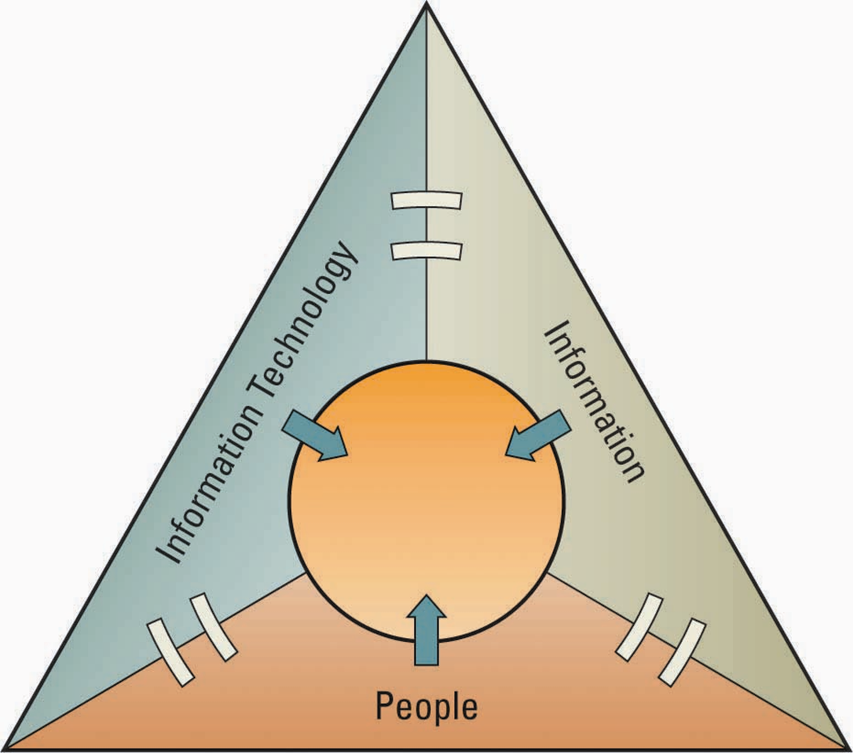Business And Technology Quiz: MIS And IT

Welcome to this Business and Technology Quiz. These are the following learning outcomes of this test: 1 Compare management information systems (MIS) and information technology (IT). 2 Describe the relationships among people, information technology, and information. 3 Identify four different departments in a typical business and explain how technology helps them to work together. 4 Compare the four different types of organizational information cultures and decide which culture applies to your school.
- 1.
Which of the following represents the order of priority for the three primary organizational key resources?
- A.
Information, people, information technology
- B.
Information, information technology, people
- C.
People, information, information technology
- D.
None of the above
Correct Answer
C. People, information, information technologyExplanation
The correct answer is "People, information, information technology." This order of priority suggests that people are the most important resource in an organization, followed by information and then information technology. This means that the focus should be on the skills, knowledge, and capabilities of the workforce, followed by the effective management and utilization of information, and finally the use of technology to support and enhance these resources.Rate this question:
-
- 2.
_____________ is data converted into a meaningful and useful context.
Correct Answer
information
InformationExplanation
Data becomes information when it is processed and organized in a way that it becomes meaningful and useful for decision-making or understanding a particular topic or situation. Information provides insights, knowledge, and understanding that can be applied in various contexts. It is the result of analyzing, interpreting, and presenting data in a format that is easily understandable and can be used to make informed decisions.Rate this question:
- 3.
Why do students need to study information technology?
- A.
Information technology is found in only a few businesses
- B.
Information technology is rarely used in organizations
- C.
Information technology is rarely discussed in business magazines
- D.
Information technology is everywhere in business
Correct Answer
D. Information technology is everywhere in businessExplanation
Students need to study information technology because it is everywhere in business. In today's digital age, technology plays a crucial role in almost every aspect of business operations. From managing data and communication to streamlining processes and enhancing productivity, information technology is integral to the success of organizations. By studying information technology, students can gain the necessary skills and knowledge to effectively navigate and leverage technology in the business world.Rate this question:
-
- 4.
Which of the following is one of Thomas Friedman's 10 forces that flattened the world?
- A.
Google
- B.
Fall of the Berlin wall
- C.
Microsoft IPO
- D.
Cell phones
Correct Answer
B. Fall of the Berlin wallExplanation
The fall of the Berlin wall is one of Thomas Friedman's 10 forces that flattened the world because it symbolized the end of the Cold War and the division between East and West. This event led to the reunification of Germany and the opening up of Eastern European countries to the global economy. It allowed for the free flow of ideas, goods, and people across previously closed borders, thereby facilitating globalization and the flattening of the world.Rate this question:
-
- 5.
Information technology is not an important enabler of business success and innovation.
- A.
True
- B.
False
Correct Answer
B. FalseExplanation
The statement is false because information technology plays a crucial role in enabling business success and innovation. It allows businesses to streamline their operations, improve efficiency, and enhance communication and collaboration. IT also enables businesses to gather and analyze data, leading to better decision-making and the development of innovative products and services. Furthermore, IT enables businesses to reach a wider audience through digital marketing and e-commerce, opening up new opportunities for growth and success.Rate this question:
-
- 6.
MIS is a business function, similar to Accounting, Finance, Operations, and Human Resources.
- A.
True
- B.
False
Correct Answer
A. TrueExplanation
MIS, which stands for Management Information Systems, is indeed a business function. It is responsible for managing and processing information to support decision-making and overall business operations. Similar to Accounting, Finance, Operations, and Human Resources, MIS plays a crucial role in ensuring the smooth functioning of an organization by providing accurate and timely information to various stakeholders. Therefore, the statement "MIS is a business function, similar to Accounting, Finance, Operations, and Human Resources" is true.Rate this question:
-
- 7.
MIS stands for?
- A.
Manager's Information System
- B.
Management Information System
- C.
Managing Information System
- D.
None of the above
Correct Answer
B. Management Information SystemExplanation
MIS stands for Management Information System. This system is designed to provide managers with relevant and timely information to support decision-making and help achieve organizational goals. It involves the use of technology and processes to collect, store, analyze, and present data in a format that is useful for managerial decision-making. The term "Manager's Information System" and "Managing Information System" are not commonly used or recognized terms in the field of information systems. Therefore, the correct answer is Management Information System.Rate this question:
-
- 8.
Which of the following does not accurately describe Personal Dimensions of Information?
- A.
Time
- B.
Location
- C.
Form
- D.
Space
Correct Answer
D. SpaceExplanation
The Personal Dimensions of Information refer to aspects that are unique to an individual's perception and understanding of information. Time, location, and form are all examples of personal dimensions as they can vary from person to person. However, space does not accurately describe a personal dimension of information as it is a more objective and universal concept that is not influenced by individual perception.Rate this question:
-
Quiz Review Timeline +
Our quizzes are rigorously reviewed, monitored and continuously updated by our expert board to maintain accuracy, relevance, and timeliness.
-
Current Version
-
Feb 14, 2023Quiz Edited by
ProProfs Editorial Team -
Jan 20, 2010Quiz Created by
Agazaheer
 Back to top
Back to top



